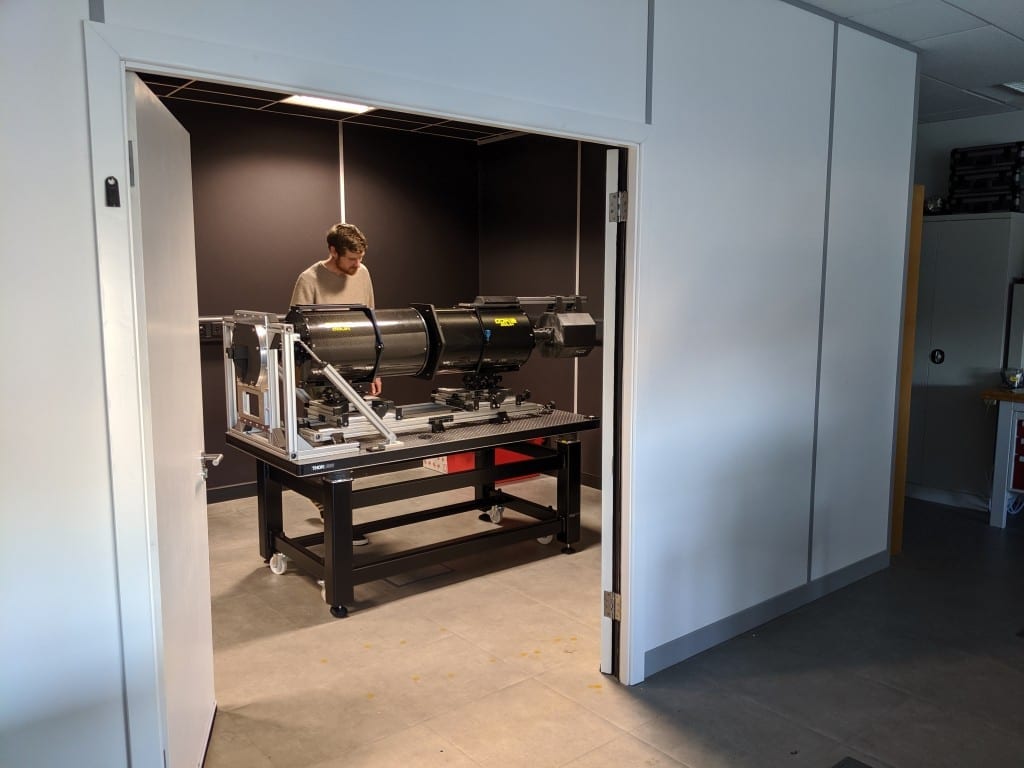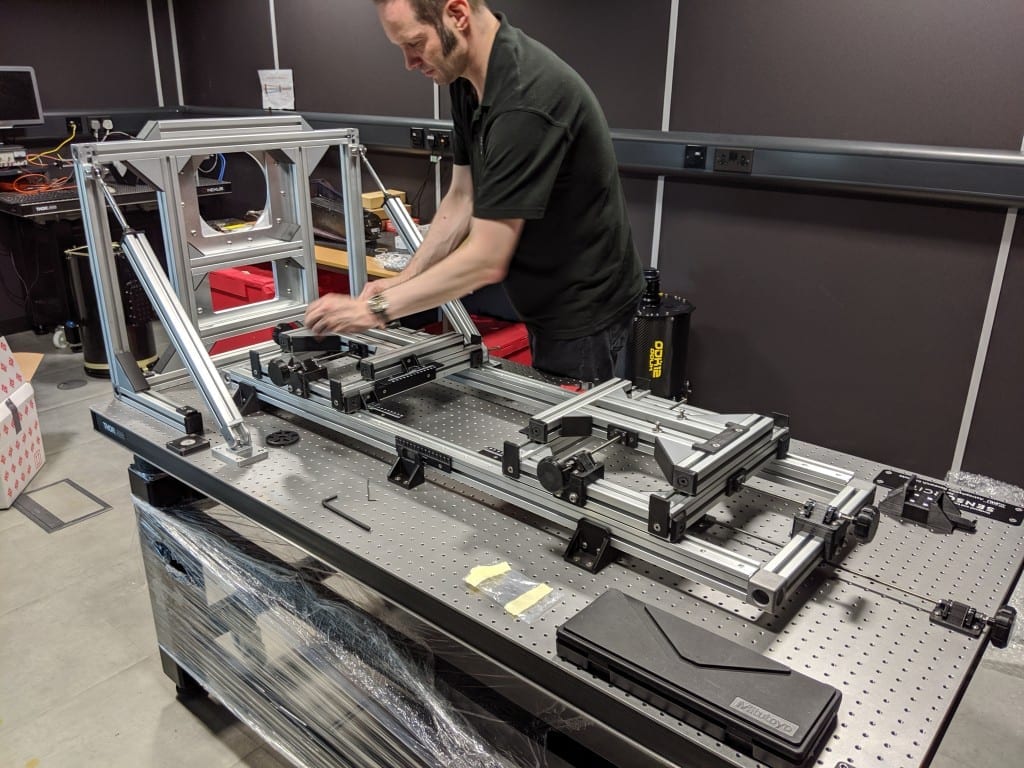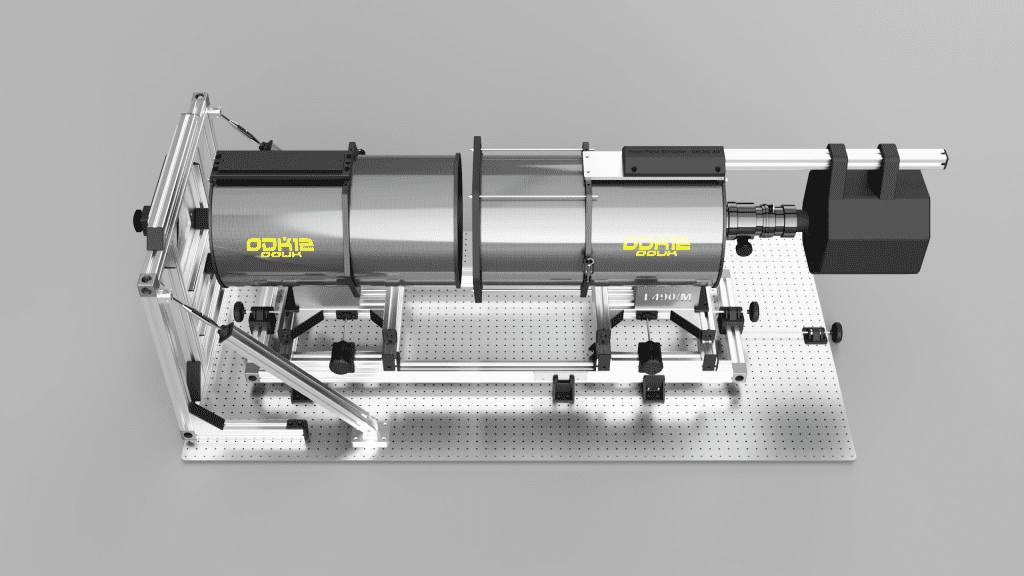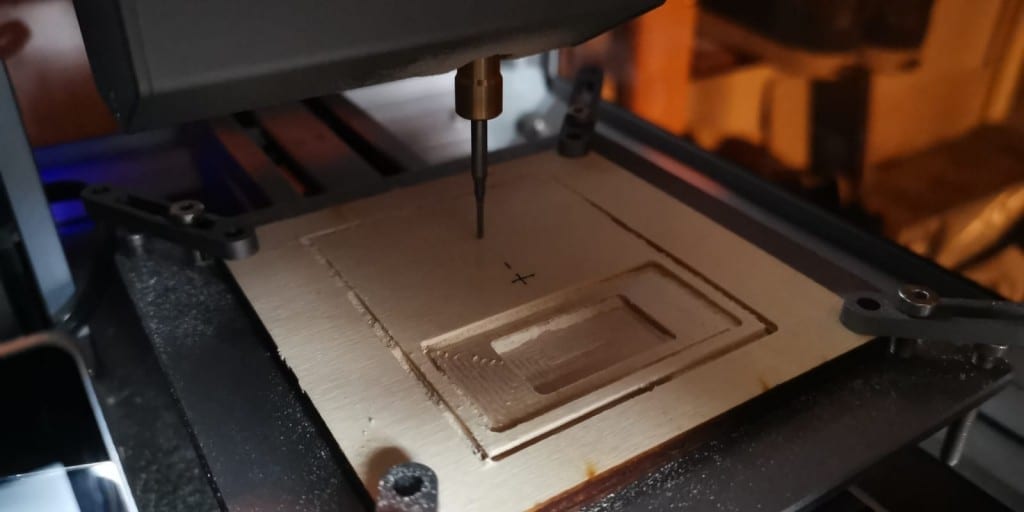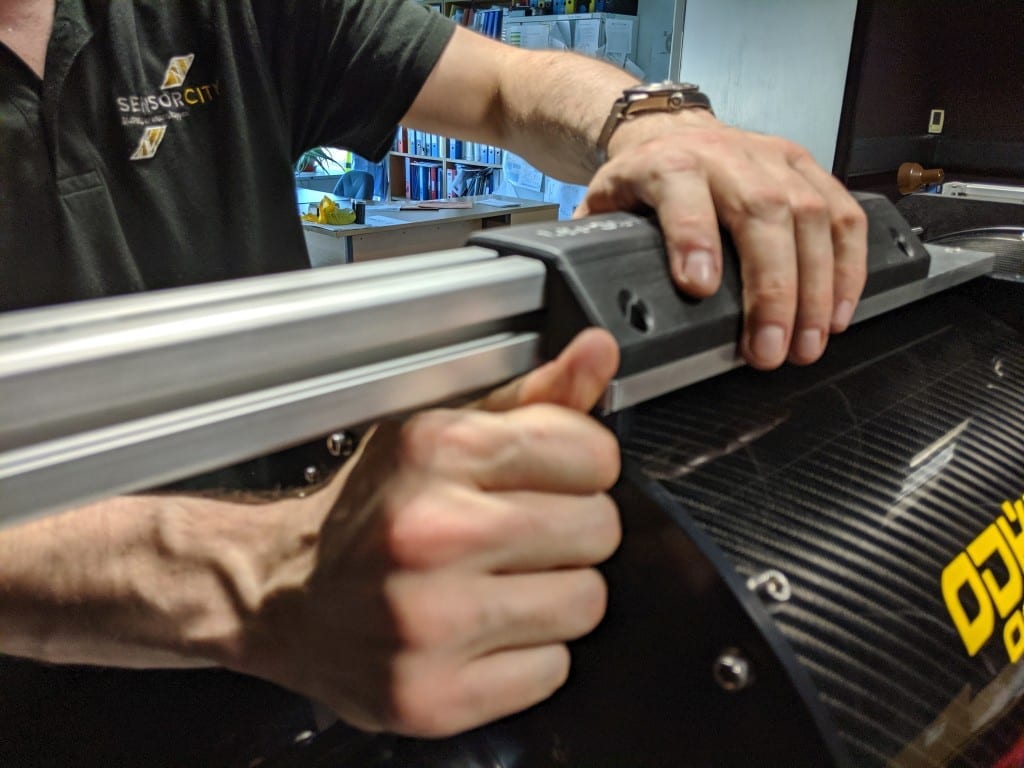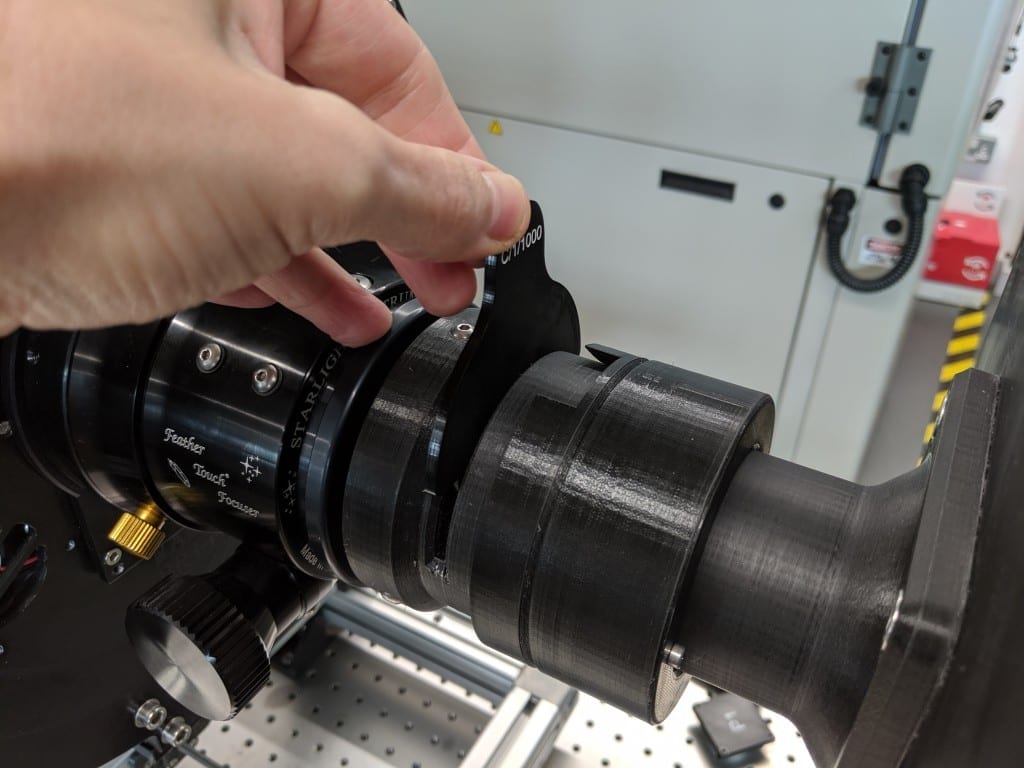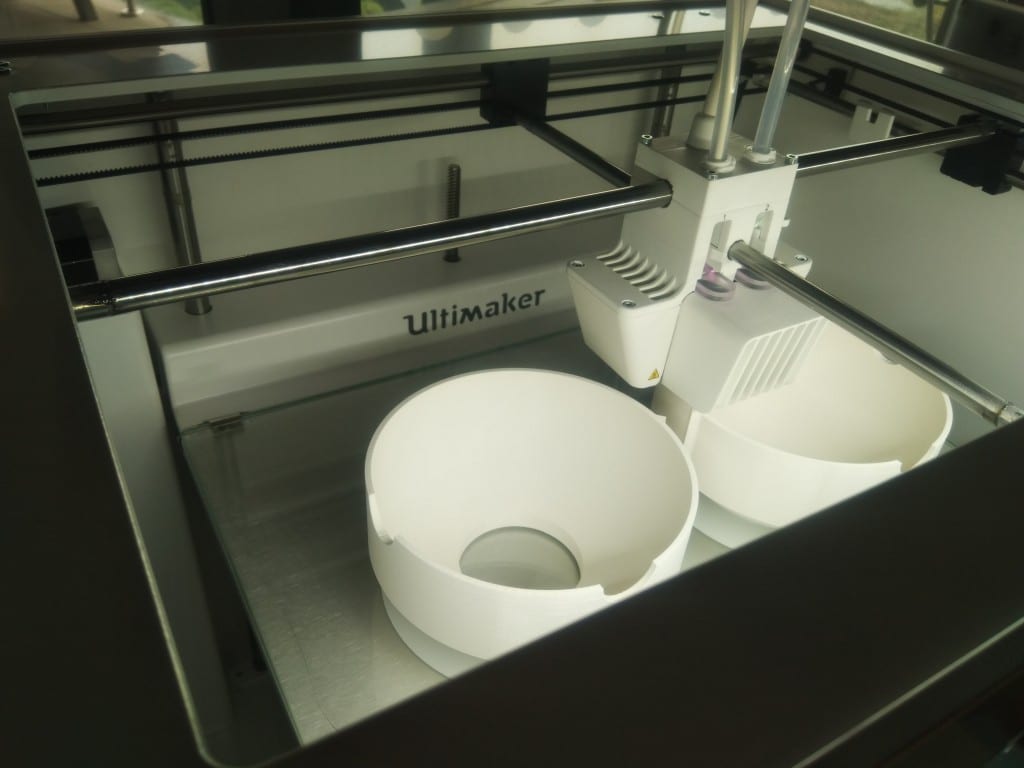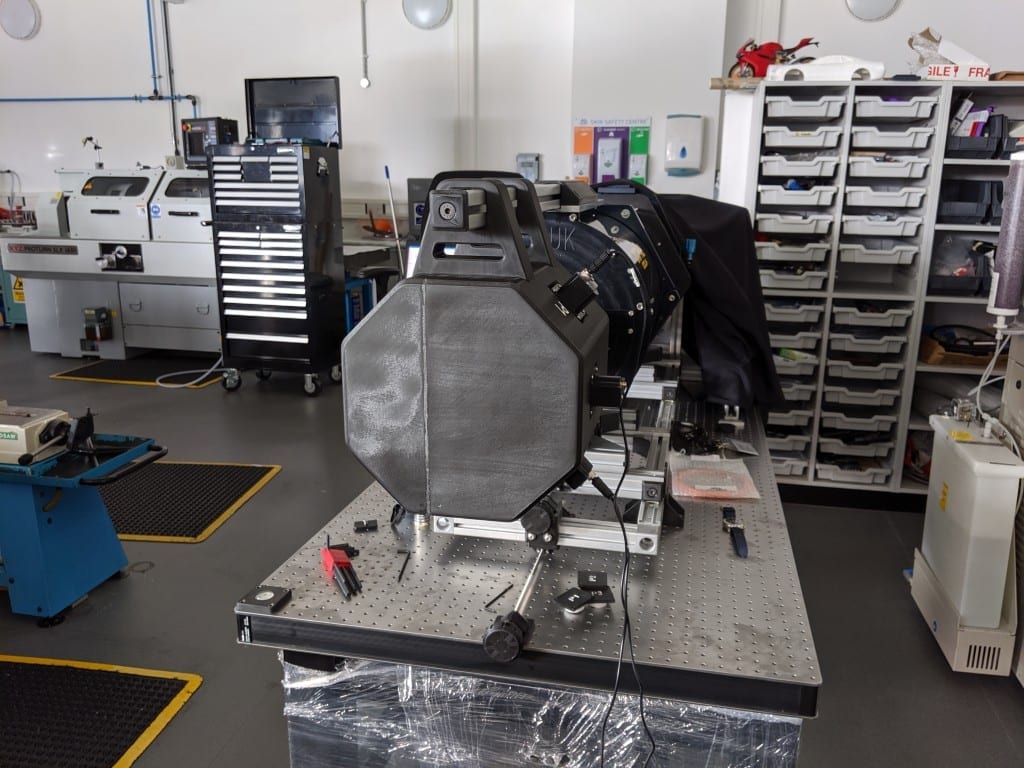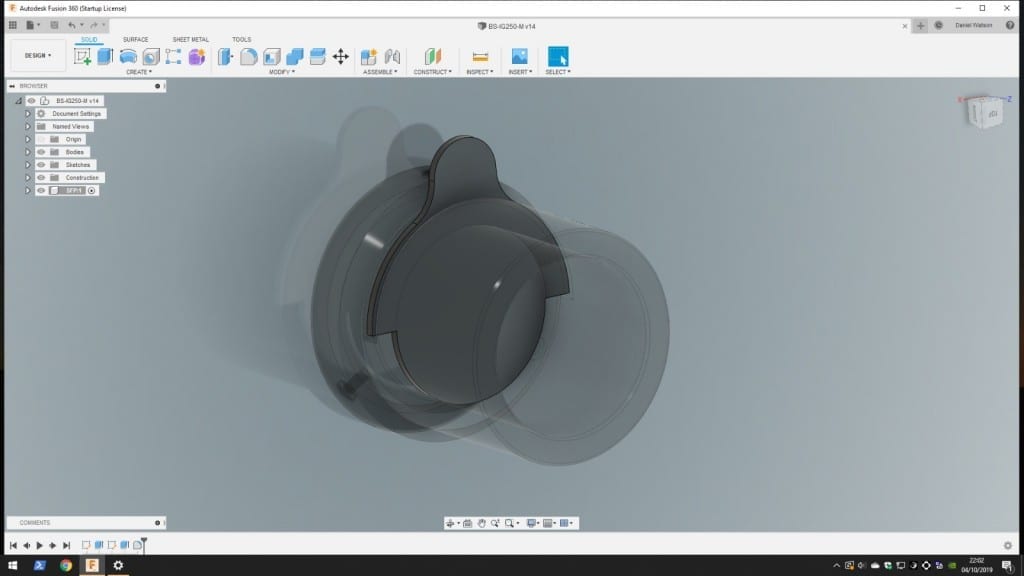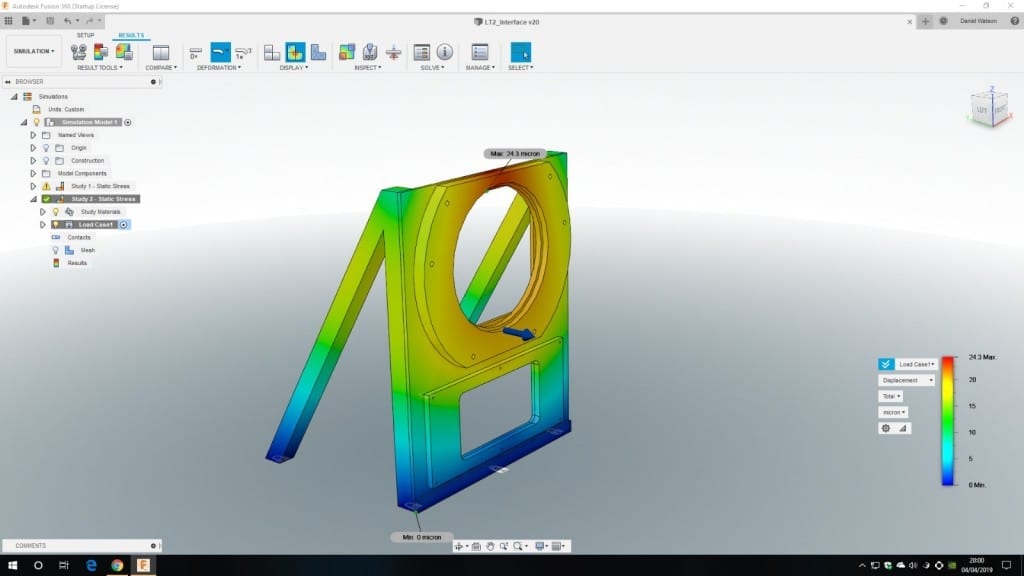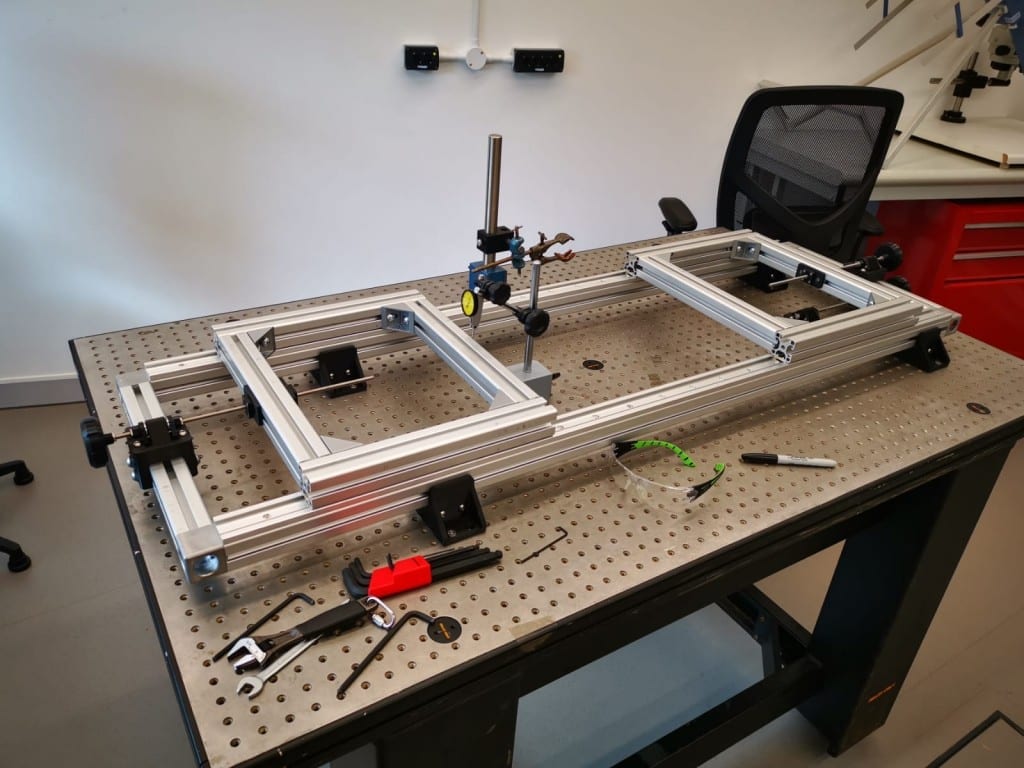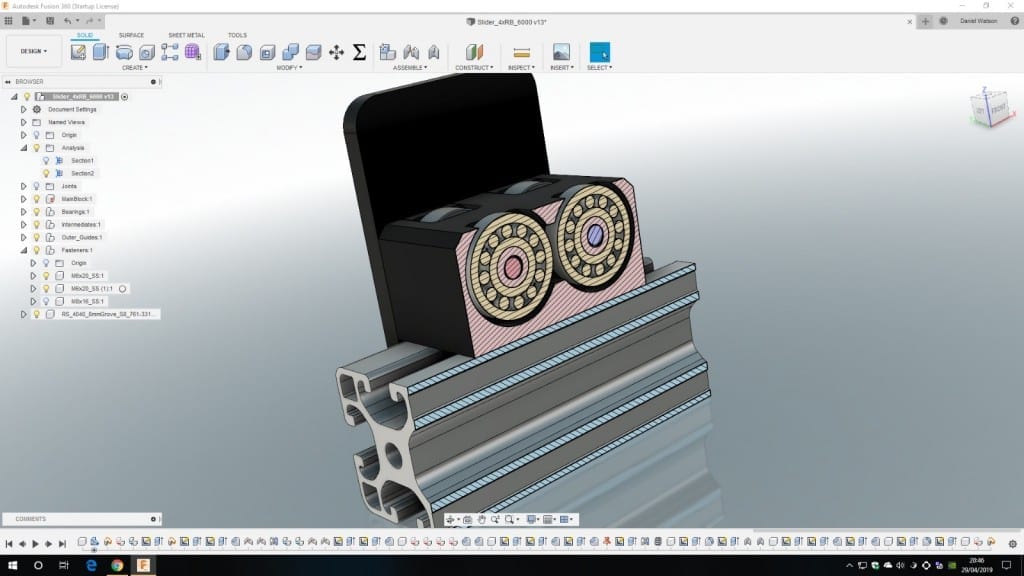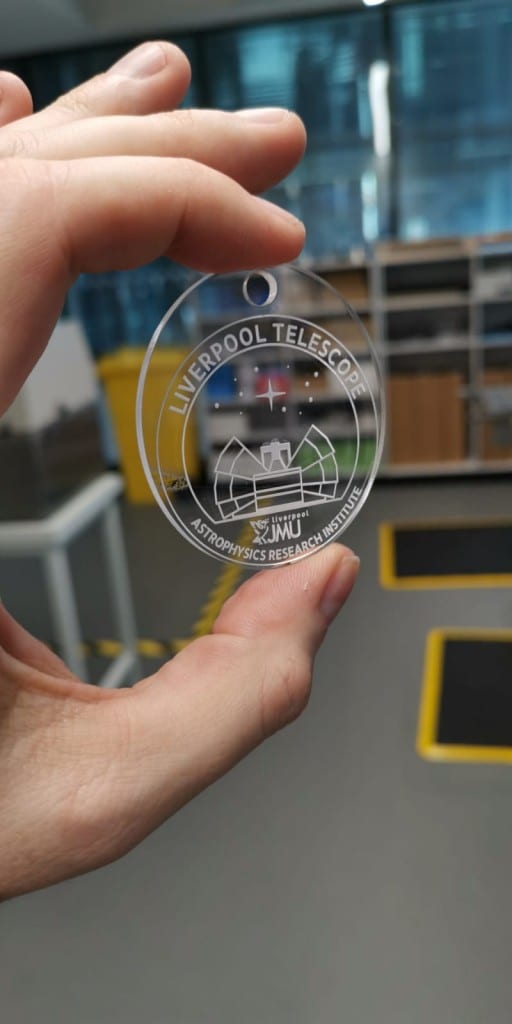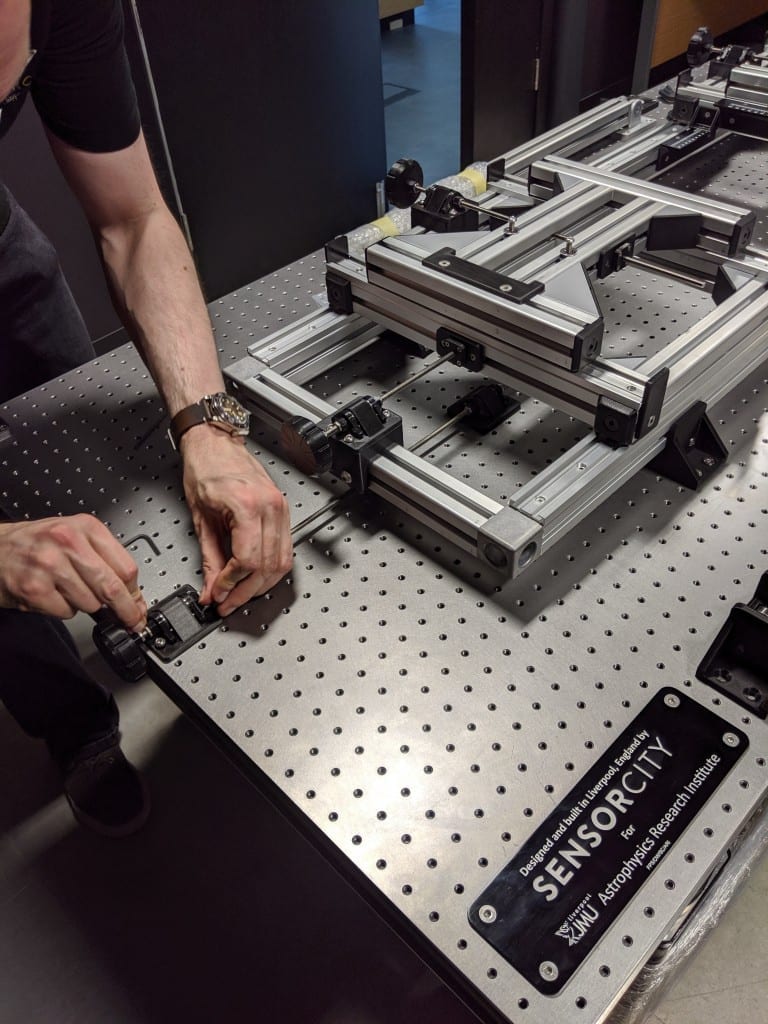The Astrophysics Research Institute (ARI), at Liverpool John Moores University (LJMU), is one of the world’s leading research groups in Astronomy and Astrophysics.
The work of the ARI encompasses a comprehensive programme of observational and theoretical research, telescope operation and instrument development, academic learning and outreach activities.
The Liverpool Telescope (LT) is their fully robotic astronomical telescope owned and operated by ARI. Located at Observatory Roque de los Muchachos (ORM) on the Canary Island of La Palma, the site will also be home to The New Robotic Telescope (NRT) within the next five years.
ARI needed to simulate light entering the telescopes from distant objects in space to allow instrument development and testing, ahead of shipping to La Palma and fitting onto the telescopes. They approached Sensor City to create an optical beam simulator to replicate the starlight through the telescopes in their dark room facility at the Liverpool Science Park in Liverpool.
Following a 4-month project, the Engineers at Sensor City created a Focal Plane Simulator – a highly configurable and flexible system that would create a simulated star image and pattern of stars that could be projected across an image plane.
The team worked closely with ARI to develop a multi-axis layout to meet all of the high precision requirements, which consisted of an innovative modular design, produced by a combination of traditional CNC machining and 3D printing techniques. They also designed a novel integrating sphere to scatter light from calibrated sources to replicate star light. The unique design approach allows ‘hot swapping’ of components while testing therefore; reducing experiment setup time and keeping initial costs low.
Professor Iain Steele, Telescope Director, Astrophysics Research Institute, said: “Sensor City was the only supplier with the wide range of equipment, creative engineering skills and cost-efficient solutions required to deliver this project.
“Our regular contact with Daniel Watson, Head of Engineering at Sensor City gave us added confidence and provided us with the ability to test on-site at Sensor City before installation at ARI.”
The newly created system allows disassembly and re-assembly to achieve repeatable set-up for different configurations, and the team are now characterising the Beam Simulator to check for repeatability and accuracy related to what the telescope is designed to achieve on La Palma.
Development of a new spectrograph is now ongoing and based on the successful Beam Simulator project, many ideas and concepts developed by Sensor City and ARI will be used as part of its initial design and testing. This new spectrograph will be part of the first suite of instruments fitted to the New Robotic Telescope when it begins operation in five years’ time.
Professor Iain Steele, added: “The beam sim will help us design and test the ‘first light’ instruments that will be fitted to our new and existing telescope – previously this ‘debug’ could only happen when you finally have an instrument on site and could delay science for around 3-6months if problems were found.”
Funded by STFC, a collaborative design approach was achieved throughout the project.
Using the beam simulator allows the ARI team to have confidence fitting their instruments as they will have been calibrated and tested for a range of conditions expected at the observatory which significantly reduces setup and installation time on site and reduces risk.
Follow the development journey in the below gallery:
